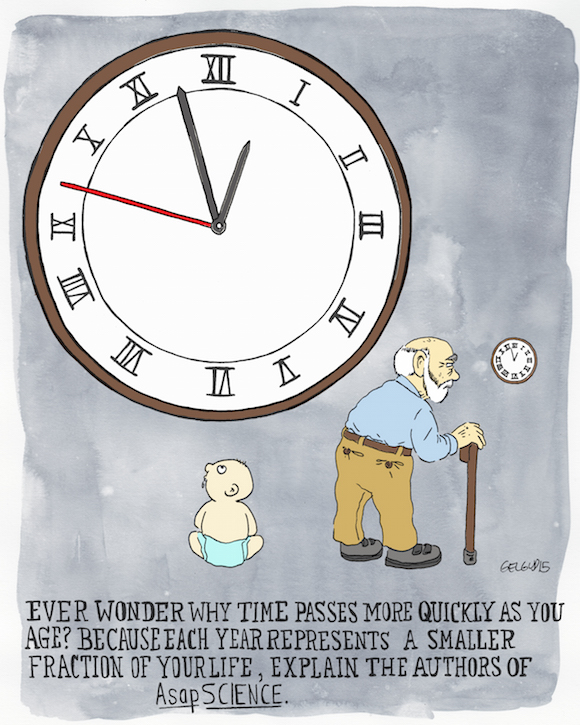AsapSCIENCE, the Book: YouTube Stars Answer Your Pressing Questions
By Nathan Gelgud

Greg Brown and Mitchell Moffit of AsapSCIENCE by Nathan Gelgud, 2015.
The AsapSCIENCE guys are Internet sensations Mitchell Moffit and Greg Brown. They met at the University of Guelph in Ontario, and three years ago started posting YouTube videos explaining everyday things with scientific explanations. It's become a hit. Their channel has about three and a half million followers, and they've just published their first book.
The book, AsapSCIENCE: Answers to the World's Weirdest Questions, Most Persistent Rumors, and Unexplained Phenomena, is a collection of their video essays in book form, including the rough illustrations that make up the animations in the videos. In their book, readers get answers to helpful questions, like: Is binge watching TV bad for you? Is the five-second rule, which has us believe that it's okay to eat food that's fallen to the floor, legitimate? Is it more painful to give birth or to get kicked in the testicles? The answers are yes, no, and it's sort of a tie.
Especially good is their essay on why time seems to pass faster as we get older. The explanation is two-pronged, with one part addressing the way our brain processes an event the first time we experience it. Our first encounter with any phenomena is a big deal, so we pay more attention to it the first time around. So we record more moments in more detail in our youth, when we're constantly encountering new things. So our younger years are denser with information in our youth, and feel longer. The other part of the reason is that, in a way, time is indeed passing faster as we get older. Our perception of time is relative to our own lifespan, so a year in the life of a five-year-old is twenty percent of the entirety of that kid's time on the planet. As we get older, the amount of time that a year takes up in our lives gets smaller and smaller, so it goes by faster and faster.
Moffit and Brown use their videos and their book to explain things people want to know, as well as things people didn't know they wanted to know. Every week, they use peer review studies and scientific journals to build their miniature tutorials. Judging from their YouTube channel's avid following, it seems to be working. But I won't speculate as to why they're so popular -- they probably have a theory about it that they can prove.

